Borneo, Sarawak Malaysia
Like images on an old film projector, the jungle slowly flickers by. When the hum of the boat’s engine slows, it’s noise is drowned out by the sounds of Borneo’s deep jungle. Traveling here is not easy, but the rewards of Borneo’s interior are great for those seeking something different, something more vibrant and beautiful. As the boat pushes further downriver, the jungle is occasionally broken by the odd Dayak longhouse settlement. This place is special, a travelers absolute fantasy. I am happy to be back, back in the heart of Borneo.
Miri, the Gateway City
Most travelers travel to the Batang Rajang from the south. Josh and I, however, found ourselves in the Northern Sarawak city of Miri after traveling through Brunei. This route is a bit of a challenge as there is no public transport to Belaga from here. You are only left with one choice: buy tickets to Bintulu, get off at the Simpang Bakun Junction and then hope for the best.
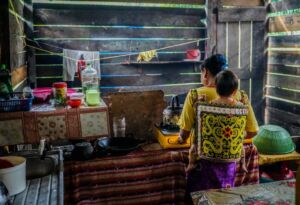
There is not much to see or do in Miri. Its actually quite a modern city, equipped with a glitzy shopping mall and decent accommodation. Miri is, however, the jumping off point to Gunung Mulu National Park, the Kelabit Highlands, and Central Sarawak.
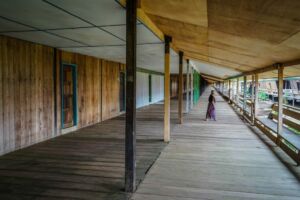
After finding out the flights to the Kelabit highlands were completely booked, and the flights to Gunung Mulu were all cancelled due to weather, we found ourselves getting bus tickets to The Junction to hitchhike into the heart of Borneo.
Tickets in hand, we left Miri early in the morning. The three hour drive to the junction was pleasant. As you leave the city and coast behind, the jungle becomes denser.
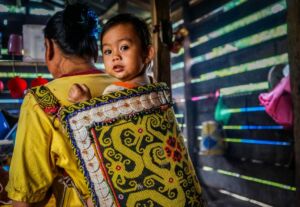
Hitchhiking to Belaga
Getting dropped off at the Simpang Bakun junction should not be taken lightly. When we got off the bus, we were expecting to see cars waiting to take passengers onward to their final destination. Instead, all that was there was a few chicken kebab and fruit stands.
The locals looked at us as though we were insane for trying to hitchhike from here. We truly were in the middle of nowhere. After an hour, however, a truck pulled over and offered us a ride to Belaga (for a price, of course). We negotiated our driver’s very high beginning price down to 80 Ringgit per person. The truck was already jam packed full of people so, as you can imagine, the ride was not comfortable.
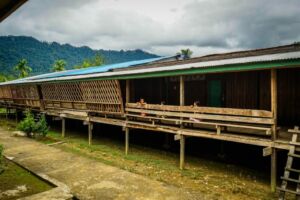
Another three hours had passed when we finally rolled into Belaga. Belaga consists of several concrete buildings, a few of which have some basic Chinese restaurants in them. Then, of course, there is Daniel Levoh’s Guest House.
Belaga, Kayan Longhouses, and Jungle Boat Driving
I am pretty sure Belaga has no mayor or formal leader, but if there is one, it is Daniel. Born nearby in a Kayan longhouse, Daniel is a sort of legend in Belaga. Stay at his place and this incredible man will tell you stories of a Borneo he knew long ago. Stories of headhunting, animism, and Borneo before modernization.

After checking into Daniel’s guest house, he arranged us to visit a nearby longhouse called Sekapan Panjang. Getting there was half of the fun! Our captain, who was a bit of a comical character, let me take charge of the boat. Cruising through the jungle on a traditional Dayak boat is a liberating experience.
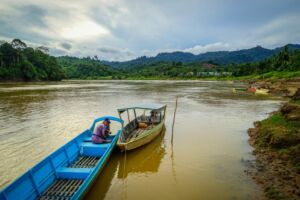
Sekapan Panjang isn’t what most travelers expect. The days of traditional wooden longhouses, adorned with hanging baskets of heads, are gone. Now the longhouses here are made of plywood and concrete, and the skulls have been abolished by catholic missionaries.
Explore Sekapan Panjang with an open mind and you will find hints of these people’s pasts. Shy, elderly women still bear tattoos, and men construct Dayak machetes; just as they did in the headhunting days.
The local hunter took us into his house to show us his wife’s beadwork, which was stunning. She carried her child in a basket upon her back. They fed us fried bread and local tea.
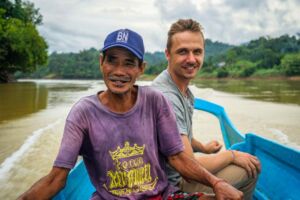
The one thing that stood out the most in Sekapan Panjong was the local’s smiles and hospitality. Chatting with the elderly women and comparing our tattoos was a great experience. She had plenty more than me, as you can imagine.
After a few hours in the village, Daniel took us back to the boat, which I navigated upriver to Belaga. The boat captain told me many times that I was a great driver, but I think he was actually just nervous that a foreigner took charge of his vessel.
That night, we chugged arak* and listened to Daniel’s incredible stories of when he was living in the longhouse.
*Arak – A strong dark liquor made from Borneo’s herbs, its tastes like a strong alcoholic beverage that is based from cough syrup.
Traveling the Batang Rejang in the Flying Coffin
Borneo is the world’s third largest island. Its fierce rivers twist and turn through the land like snakes. These rivers are the way to travel in Borneo. The Batang Rejang is one of Borneo’s last great river journeys. To travel them, you must ride the flying coffins* that plough up and down the banks of these mighty rivers.
*Flying Coffin – Imagine a long, metal tube that, quite frankly, looks like a submarine. Now cram a bunch of people deep into the metal interior and blast the air conditioner to absolute frigid temperatures. Not sold yet? How about a TV playing the latest Malaysian movie involving cheesy love scenes and deceit. This is the flying coffin. It’s not all bad, though! You can ride on the outside of the boat, just make sure you hold on tight!!
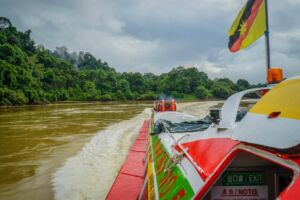
The Coffin departed at 7:30 am and took us deep into Borneo. This truly was an amazing experience. As I sat outside, feet dangling in the waters, and holding on for my life whenever we hit rapids, I had the chance to contemplate Borneo’s raw nature. Hours can go by and all you see is dense, thick, inhospitable jungle.
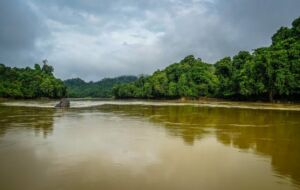
The Boat often turned sharply, missing rocks by merely a few feet. We frequently had to divert around large tree branches and vines hanging above the river.
Eventually, we reached the Pelagus rapids. Signs warned of the rapids danger. On the shoreline, wrecks of boats lay mangled, warning to those who entered these waters. Our captain navigated through the rapids like a master of his trade.
Kapit, Land of the Head Hunters
When we finally pulled into Kapit we felt like we had crossed the entire island of Borneo. In reality, we only traveled about 150km.
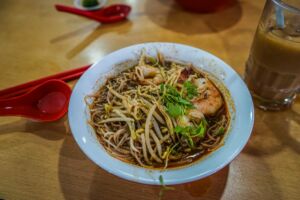
Kapit has much more than Belaga as far as accommodation and food options, but it still is a very small place. At the heart of the town is its main square. At the end of the square, there is a bakery that whips up a mean Laksa.

Coming to Kapit to visit old time longhouses sounds like a great idea, but the reality is that there is no tourism infrastructure here. I have heard rumours of there being guides here, but this is something I have not actually seen for myself. If you want to get to the longhouses, you will have to do some searching.
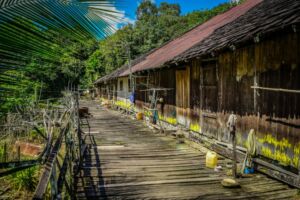
Guide to getting to the Long Houses in Kapit
Step One: There is a busy market on the northern side of Kapit. Come here for locally grown fruits and veggies, and also to find a guide/driver.
Step Two: Look for the vans. They usually crowd around the side of the market selling local cigarettes.
Step Three: befriend a driver who speaks English and you are on your way.
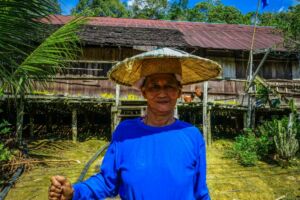
If you can follow this guide you too will get an experience of a lifetime as I did. Once our transportation was arranged (120 MYR), we stopped to buy a few things for the chief of the longhouse. Longhouse etiquette dictates that you must bring a gift. Our gift was a box of bottled water, sweets and, of course, two large bottles of Arak.

Drinking Tuwak with the Chief, Rumah Jandok
We chose to go to the longhouse named Rumah Jandok, as I had been here a couple years previously. I like this Iban* longhouse as it is still very traditional. Its structure is made from creaky old wood and its inhabitants still proudly display the racks of human heads in baskets hanging from the ceiling.

*Iban: One of Borneo’s many tribes found in the Sarawak Region. The Iban are famous for their ritualistic taking of heads and adorning their bodies with beautiful tattoos. These tattoos represent experiences and knowledge the Iban have obtained in life.
Upon arrival, we were introduced to the Iban chief, a small, proud man, covered in tattoos representing the heads his father had taken. The chief guided us around, telling us his longhouse’s traditions and tales of the past. We even got the opportunity to look at the sword his father used to take heads!
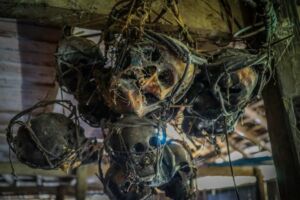
The longhouse seemed slightly quieter than as I remembered from before. The chief explained that the families are slowly moving into their new longhouse up the hill. The chief invited us to see the new house and to try some Tuwak* with him.
*Tuwak: A local spirit made from rice. It’s sweet and delicious. Because of its delicious taste, Tuwak should be drank with caution. Mixing a delicious drink with Iban hospitality will lead you to you getting very intoxicated. Be warned.
The Chief brought us to his new longhouse, which was still under construction. The new structure is much more modern and made from concrete.
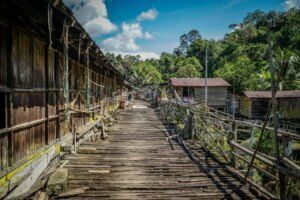
Inside, the Chief sat us down and had a women pour us Tuwak.” Oomba Oomba Oomba!” the chief yelled out. He told us this must be said before we gulped down the sweet, tantalizing nectar called Tuwak. One shot, two shots, three shots, not sure. The bottle of Tuwak disappeared before our eyes, only to be replaced with a bottle of Langkau*.
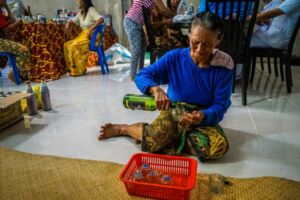
*Langkau: Tuwak’s slightly stronger older brother. This stuff comes out when Tuwak is no longer deemed sufficient and being intoxicated begins to take grasp of you. Iban hospitality at its finest.
Drinking with the chief, sharing laughs and stories, was the highlight of visiting the Batanga. Later in the evening, while having a cigarette with the chief, I was told that now that I was,in fact, the chief’s son. From now on I am to call him Father. Apparently, breaking out the Langkau is also an adoption ceremony. None the less, I am proud to have a second father; this one an Iban Chief in the heart of Borneo.
Off to Kuching
Saying our goodbyes to the chief and our driver, we went back to our hotel in Kapit. Its name was the New Rejang Inn. Decent place for the money, but the Tuwak defiantly helped drown out the street noise.
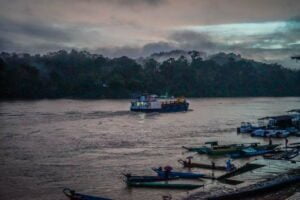
From Kapit, the river winds down to a city called Sibu. The boat to Sibu leaves at 6:45 am, and the journey takes about 3 hours. Upon arriving in Sibu, you can find a boat that leaves for Kuching at 11:30. This is, by far, the fastest route to Kuching. The rest of this leg of the journey takes another five hours. Many hours to mull over the Chief and his Tuwak!

Useful Information
Location: Belaga, Kapit, Sarawak Malaysia
Hotels: Belaga – Daniel Levohs Guest House. Kapit – The New Rejang Inn
Flights: Momondo
Transport: Belaga to Kapit boat – 55 MYR. Daniels Longhouse Tour – 65 MYR. Van to Longhouse – 120 MYR Drinking Tuwak with the Chief – Priceless
Recommended Guide Book: Lonely Planet Borneo, Lonely Planet Malaysia
Recommended Gear: Mini Solar Panel, Fjallraven Pack, Lifestraw Bottle
Photos taken with: Sony A7, GoPro Hero 4 Black
Top Tips: Travel here is not easy. The boats are often delayed, accommodation is not luxurious, and English is not widely spoken. Make sure you take the time to properly see everything, and have the patience for bumps along the road.
Like My Post? Share it on social media!
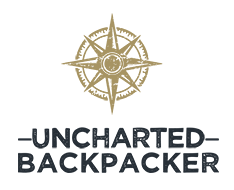

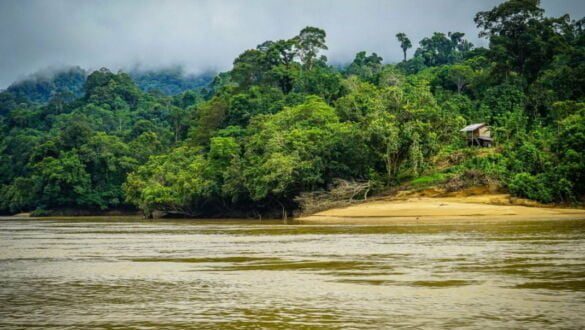
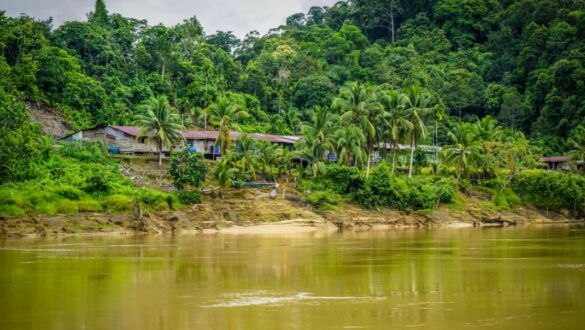

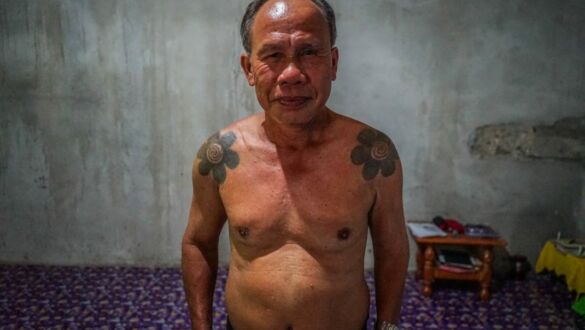
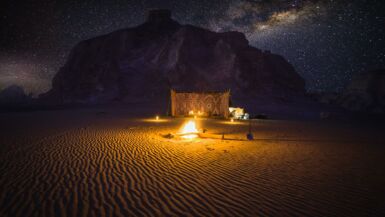
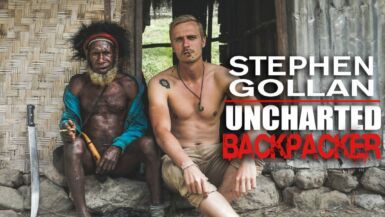
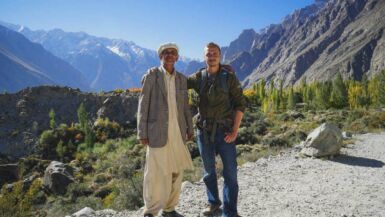
Wow, amazing photos Stephen. Some real insights into Malaysia!
Stephen, you have experienced the Borneo adventures. I have never been to Belaga or Kapit. Looks like they are now in my Sarawak’s Bucket List. I love how you describe the flying coffin though the name would make me think twice to ride. J
I’m kind of glad I didn’t attempt to get to Belaga or Kapit. I did not schedule enough time in Sarawak and Gunung Mulu and the other national parks near Miri kept me busy for longer than I thought.
thanks sharing your great experience in our longhouse Sekapan Panjang,next time come again 🙂
Ah this is brilliant! Exactly the information I’m looking for except I’m hoping to be able to get a 4WD from Bintulu. Fingers crossed. Is it easy enough to find an English speaker in Kapit? I hope they still have the skulls when they move to their new longhouse, that’s what I’d love to see!
Hi! Great to see your post. How many days would you recommend to go to Kapit and Belaga? I thought 1 day for each place, and then continue the next day.. what do you think? Or maybe skip Belaga and only go to Kapit? I’m curious to know what you think.
Greetings Manouk
one or two days will be fine! but if you have more time there is plenty of opportunities for hiking, fishing and other cool things!
Oh god, it is so surprising to me that Eastern Malaysia has such the untouched nature like that, but it seems that the life there is a bit mysterious (just my feeling via reading your post). Haha. Thanks so much for the insightful view of Borneo.
Good information! Really helped me when we went to Kapit to find a longhouse. I found that there was so little info online.